
Manchester United: The Double
Written by: Rik
Date posted: October 22, 2017
- Genre: Sport
- Developed by: Krisalis Software
- Published by: Krisalis Software
- Year released: 1994
- Our score: 6
Earlier this year, to celebrate 25 years of the Premier League, the BBC showed a repeat of Match of the Day from the first day of the season in August 1992. It was a good old laugh for lots of reasons, from the rustic football, to the awkward but refreshingly candid post-match interviews, or the guest punditry from the Japan-bound Gary Lineker, freshly retired from international football and offering mildly catty remarks about Graham Taylor. My team, Leeds United, were the reigning champions, and so secured a place as one of the main matches: a scrappy victory over Wimbledon, earned largely thanks to an opposition defence struggling to get to grips with the new backpass rule.
The previous season’s runners-up, Manchester United, were also featured, reviving dormant feelings of antipathy towards The Red Devils that had become increasingly distant and half-hearted since Leeds dropped out of the top division. A glimpse of 90s United brought it all flooding back: Peter Schmeichel and his pantomime bollocking of the defence; Steve Bruce and Gary Pallister, who seemed to be twice as old as they actually were and looked as if they’d come straight from the pub; Denis Irwin, for whom a tentative enquiry from Leeds manager Howard Wilkinson later in the season somehow precipitated the departure of Eric Cantona for a bargain fee; Paul ‘the Guvnor’ Ince, generally acknowledged as a great player yet hounded out of United and, later, Liverpool for getting on everyone’s nerves; Mark Hughes, whose slightly camp mop of curly hair belied a tendency to commit cynical and nasty fouls (and get away with them). Bastards, the lot of them.
Dressed in a truly terrible 90s away kit that looked like a teenager’s pyjamas, they succumbed to Sheffield United, and the mighty Brian Deane, by two goals to one, and I’m afraid to say that it all brought a smile to my face (even though the classic smug United line-up of the 90s wasn’t quite complete without the addition of Cantona later that season and Roy Keane in the summer). United, of course, had the last laugh: they won the league that season (and several more times over the next 20 years), while Leeds ended up in 17th place, still comfortably the worst league finish by reigning champions in Premier League history.
The Premier League meant that football was becoming big business, and United’s sustained period of success during this era enabled them to capitalise on that success commercially. In the early 90s, though, their tie-in aspirations were relatively modest, and developers Krisalis, responsible for previous United games, including Manchester United Europe, were given the opportunity to produce a couple more games: 1993’s Manchester United Premier League Champions, and the game in question here (the last of their United spin-off games, so there would sadly be no Manchester United: Lost The Title To Blackburn and the Cup to Everton, or Manchester United: You’ll Never Win Anything With Kids).
Premier League Champions and The Double share plenty of DNA, and I did attempt to give Premier League Champions a try, but just couldn’t get along with it. The main difference is the perspective, with Premier League Champions being more of a Sensible Soccer/Kick Off top-down affair, while The Double is kind of a hybrid of Kick Off and FIFA, blending the hectic but responsive gameplay of the former with the, er, camera angle of the latter. FIFA did look good, granted, but the isometric angle never seemed a natural fit for a footy title. The Double doesn’t look as good as FIFA: in fact, it doesn’t even look as good as Manchester United Europe, but there’s a lot more going on behind the scenes and on the pitch than either of those games.
The Double boasts most of the features you’d expect of a 90s football game, albeit with a mainly domestic focus. Play a league, a cup, or start a career mode featuring the opportunity to play multiple seasons and delve into the transfer market to improve your squad. It’s SWOS-lite, limited to transfer budget and tactics, and you’re not going to get fired (which makes the option to drop playing altogether a rather lightweight and unappetising one). Squads and stats are reasonably accurate for the time, and there’s even an editor if for some reason you wanted to spend time tinkering with the teams and players. Mercifully, you don’t have to play as Manchester United, although as in real life they are one of the better teams, and the impact of the branding is limited to the title screen and an occasionally-seen graphic that shows Ince and Brian McClair celebrating in the kit of the league winners.
On the pitch, the action is pretty quick, unlike the sluggish FIFA. The ball doesn’t stick to your player’s foot but you can lose control while dribbling, depending on the ball control skills of that particular player. A one button affair, passing is semi-automated, with a tap sending the ball in the direction you’re facing, and in the general direction of a nearby player, if there is one. Shooting involves more of a longer press for more power, with lift and curl added with nifty movement of the direction pad. The viewing angle doesn’t necessarily lend itself to natural curling and bending of the ball, but you get used to it after a while.
Goals can be hard to come by initially, thanks to goalkeepers who can stop close range shots dead without parrying or flinching. Meanwhile, opponents seem to dance behind your defence with ease before performing delightfully accurate looping and curling shots from unlikely angles. My first attempt at a season saw me frantically adjusting my own targets down from ‘win the league’ and ‘finish roughly where the real-life Leeds team finished’ to ‘avoid relegation’ and ‘beat Derby County’s all-time record low points total for the Premier League era’.
There was nothing for it: I was going to have to tinker with the hitherto-ignored tactics screen (known as ‘Tacti-Grid’). Scarred by past experiences of Sensible World of Soccer and its bewildering cross/tick feedback system, I found this one altogether more manageable, more about general positioning and movement than micromanaging every player’s position on the pitch. Changes based on in-game observations did seem to have the desired effect – in my case, moving defenders deeper, making the formation narrower and giving one central midfielder defensive and one attacking duties seemed to do the trick.
Having good shooting stats for players in midfield and attack is also important, as many goals are scored from outside the box with plenty of power and curl. Relying too much on this tactic can be damaging though, as opposing defences can close the ball down quickly, and attacks become a repetitive sequence of moments in real life football where a lumbering defender unexpectedly finds himself in a position to shoot, is urged to do so by the crowd, but by the time brain has communicated with foot, the moment has gone.
Although playing a fluent passing game is arguably beyond you, it does pay to keep the ball moving where possible. There are definite fist-pump *yes* goalscoring moments, but it’s not the most instinctive of games when you’re on the attack. Curiously, this isn’t the case when defending, which requires frantic and well-timed interventions at crucial moments, with crosses and lofted balls into the box dealt with by the mildly ludicrous headers, with players’ jumping capabilities calling to mind the arcade basketball title NBA Jam.
During my initial struggles to find the net, I recalled someone who wrote about this game (possibly on Rock, Paper Shotgun, although I can’t find the piece now) saying that a glitch meant you could round the keeper with ease and score every time. With significant game time under my belt, I did find that they were easily lured from their goal at certain angles, although actually getting the ball in the next after that relied on dodging the attentions of several advancing defenders. Possession most often switches between teams by players running into each other, with the slide tackle button being fairly useless, and having the additional disadvantage of causing players to remain on the ground for what seems like an eternity. This also applies to fouled players, who remain face-down, motionless, for a worrying amount of time. No-one ever shows for a throw in, either, with the player with ball in hand frequently left stranded. Sometimes a recently tackled player is nearby and lying in an ideal position but upon recovery immediately buggers off, leaving you to toss the ball hopefully to no-one in particular. Other odd moments include those where the keeper dives to save a rolling shot that doesn’t actually reach him, only for a nippy forward to run in and slam the ball into the net.
As mentioned, the opposing attackers seem capable of things that you don’t imagine it possible for human players to replicate. Instead, less subtle methods are employed, relying on a super striker like Tony Yeboah to score the kind of goals Tony Yeboah used to score once or twice a season, but once or twice a game. Only he was able to get Mr Sticky-Hands Goalkeeper to parry the ball following the most ferocious of shots, often sprinting 20 yards in the meantime to volley in the rebound. The nimble finishes of opposition forwards, combined with the lack of on-screen information about who has the ball, makes for some delayed additional frustration as you find out at the end of the match who scored against you. (Unless you’re diligent enough to look up the opposing line up and formation beforehand and commit squad numbers to memory). Sample mental conversation: “Southampton are a bit handy, aren’t they? Le Tissier is too good. Oh, it was Craig Maskell who scored a hat-trick.” Or: “Forest have thrashed me, must have been Stan Collymore. Jason Lee, you say? Oh right.” (Jason Lee and Robert Rosario once both contrived to score against me in the same match, which 90s football fans will recognise as Seriously Unlikely).
Still, The Double was pretty solid entertainment while it lasted, which in my case was about 3 full seasons. During that time I was involved enough (and suitably chastened by early results) to fart about with tactics and find that it did make a difference, and take steps to improve my squad and my performance. (I do have some kind of reputation to maintain as the supposed football expert, although I think such things are relative. Of the two of us, I suppose I am, but my skills are mid-table at best. I wonder what mid-table skills at 4x strategy games equates to: your race survives ok but never threatens to take over the galaxy?)
Presentation is pretty good (menus are tidy, players, squads and kits are in order, although Leeds United’s slightly barmy decision to include blue stripes in all three kits for 93/94 did present a few tricky colour-clash situations). Sound is limited to some background menu music vaguely reminiscent of The Bad Touch by Bloodhound Gang and some reasonable crowd noise (in-game effects are virtually non-existent).
At various points I was vacillating between two positions: one, that this was actually a pretty decent effort that I just needed to get better at; and two, that it was just another dated and flawed footy game from the 90s that only someone with a borderline deranged obsession with them would possibly give hours of their life to. (This vacillation may or may not have been roughly in line with my team’s general performance). Ultimately, though, I came down on the side that says, as football games in the early-to-mid 90s go, The Double is pretty good. And in terms of a semi-realistic arcade/management hybrid, I found it more enjoyable than SWOS (sorry, yes, heresy, I know).

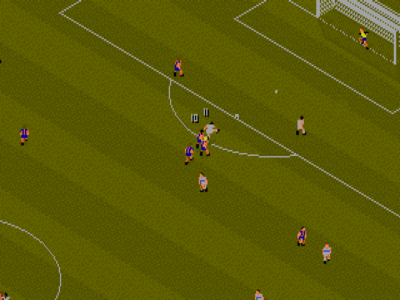
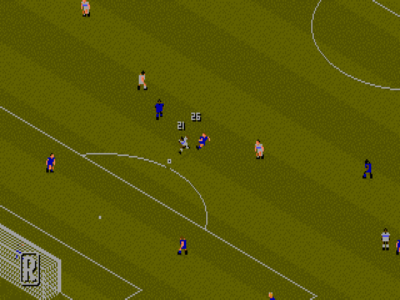

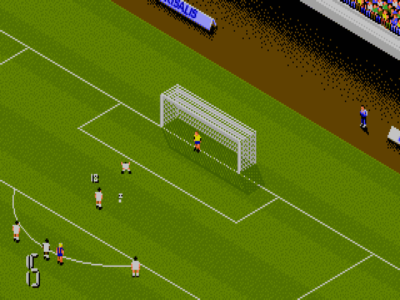
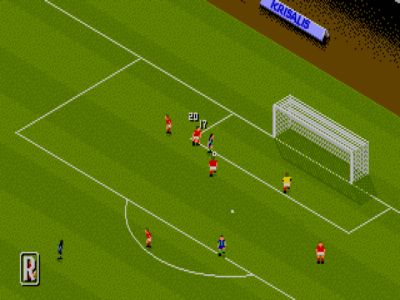
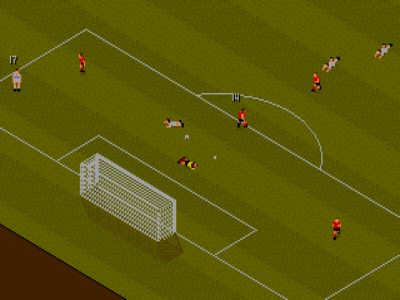

 Posts
Posts